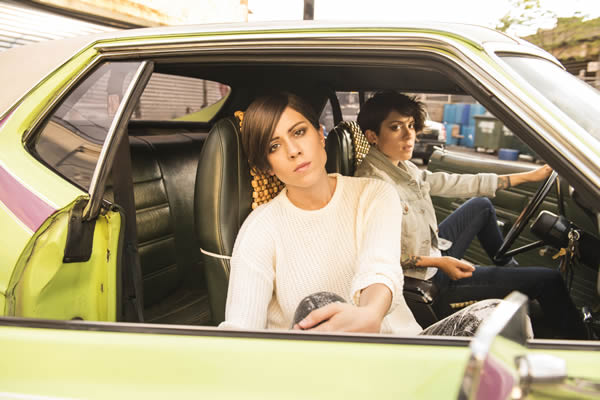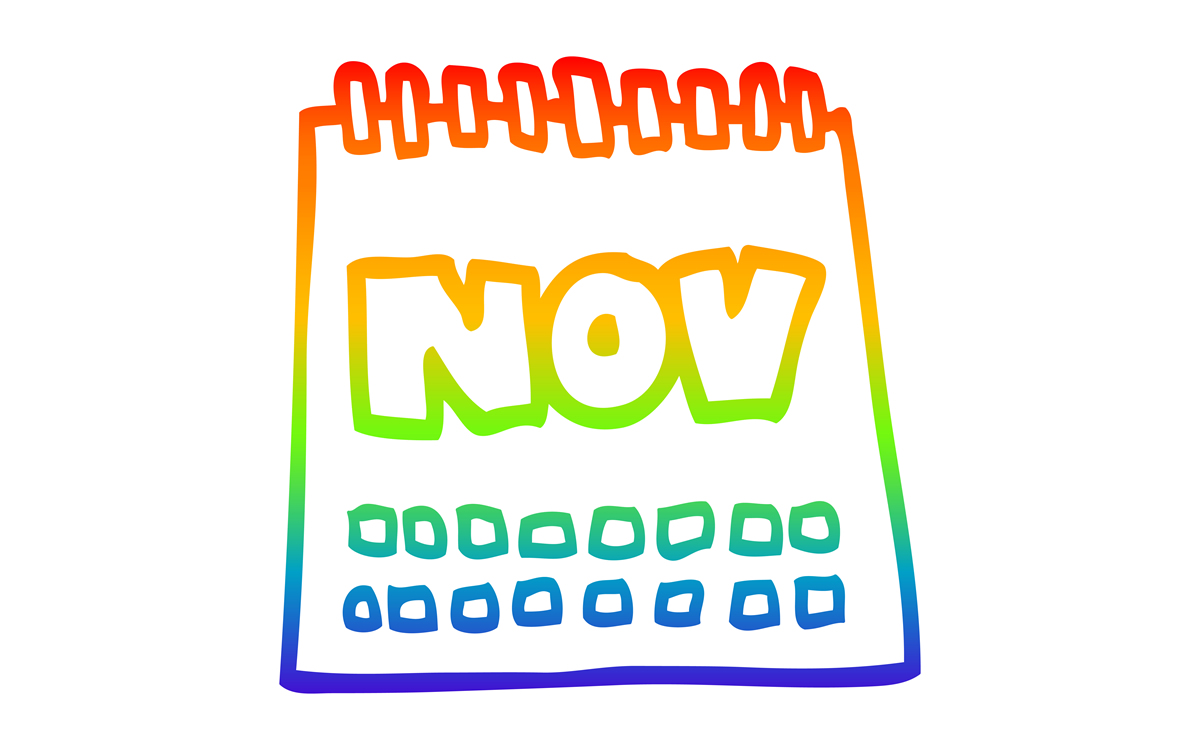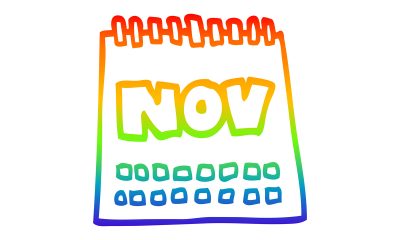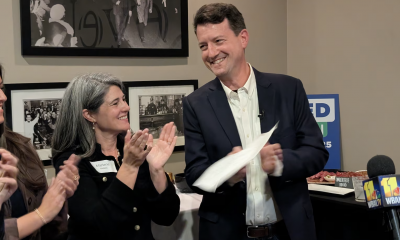Arts & Entertainment
‘Closer’ to the mainstream
Tegan and Sara play Merriweather this weekend with fun.


Tegan and Sarah say their decision to go in a more pop-friendly direction on their latest album was a conscious move. It paid-off with their highest selling album to date. (Photo by Lindsey Byrnes; courtesy Warner Bros.)
fun.
‘Most Nights Summer Tour’
With Tegan and Sara
Saturday
6:30 p.m.
Merriweather Post Pavilion
10475 Little Patuxent Parkway
Columbia, MD
$35-45
ournameisfun.com
teganandsara.com
This year has been undoubtedly the biggest of Tegan and Sara’s career.
Their album “Heartthrob” dropped in January and debuted at No. 3 on the Billboard Top 200 more than doubling the group’s previous peak for first-week sales. It went gold earlier this month in their native Canada. The Quin twins have been on a media blitz that included Ellen, Jay Leno and Jimmy Kimmel and even had their hit single “Closer” featured on “Glee.”
http://www.youtube.com/watch?v=etq2vdLieTM
Just before their HRC concert in New York next week (July 25), the lesbian sisters (now 33) are scheduled to play Merriweather Post Pavilion this weekend on the fun. “Most Nights Summer Tour,” which kicked off earlier this month in Toronto and runs through the end of September. We caught up with Tegan last week. Her comments have been slightly edited for length.
WASHINGTON BLADE: How’s the tour going?
TEGAN: It’s mostly been awesome, though we’ve only had one weekend so far.
BLADE: How do the crowds feel compared to your own headlining shows? Obviously there are a lot of people there psyched up for fun.’s set right?
TEGAN: Yeah, but it’s kind of hard to generalize. They have a real awesome music-loving audience. It’s more mainstream, yet still pretty awesome. You get up there and work your ass off to win them over but there’s been a lot of recognition when we play, especially the new stuff, the stuff that’s been on radio, so it’s been really good. They’re great allies and good friends of ours so we really enjoy doing it and it’s a really awesome opportunity for us.
BLADE: Do you have much interaction with them backstage?
TEGAN: We’ve known the guys for years and we even toured with Jack (Antonoff) on our last record for about three months, so we’re quite friendly and hang out with them but it’s a busy time for both bands. In the down time we’re trying to squeeze in a million things like radio stuff and meet and greets. But Sara and I watch the show every night. We have a courtesy mix set up at the side of the stage so we can hear the front-of-the-house mix there for us on a monitor. It feels like summer camp. It’s great.
BLADE: How long is your set?
TEGAN: We play 60 minutes. They play about 90.
BLADE: Any collaborations so far?
TEGAN: Not yet, but we’ve talked about it some. Our labels were pushing for some acoustic versions of each other’s songs but all of us have been busy so far, so we’ll see what happens.
BLADE: Other acts say U.S. pop radio is an especially tough nut to crack. “Closer” was a No. 1 dance hit here but didn’t quite crack the Hot 100. Do you think it’s harder to break a song here? If so, why?
TEGAN: It’s definitely really different in the U.S. It’s very unique. The life cycle of a single in the U.K. is six weeks and in Canada it’s three months. … It’s different too at different formats. We started mostly at college formats but have moved over to pop, which is great, it allows us to have a long life and good reach at radio. Sometimes we think as a band, “I can’t believe they’re still working that song.” But as a band, we don’t make singles, we make records so we’re very old school in that way, it’s just our instinct. Sometimes, yeah, we wish they could work another song but that said, each time we get added at another station, we see our fan base grow in that market and that’s really why we took things in that direction this time. We really wanted to change the face of mainstream radio. We’re queer and alternative but we also love pop songs and we felt it was time to see someone like ourselves represented in the mainstream. We’re reaching young audiences, these kind of queer, fringe, alternative kids and it’s really exciting. But it’s an expensive nut to crack. But I think it’s a cool time in pop music where you’re seeing more bands like fun. and f(x) who have broken into mainstream pop. I think it’s reflecting a lot more integrity than there’s been in years.
BLADE: You and Sara have talked a lot about consciously wanting to broaden your reach with this latest album. How much of the more pop-friendly sound is inherent in the songs themselves versus what the producer brings to the table?
TEGAN: I think it’s absolutely there in the foundation of the songs. Like with “Closer,” that was rebuilt about six times before we even got to the studio … which is where the song really takes flight, but the foundation and architecture, all that happens at home. But before we’d even hired a producer, we knew we were moving more in that direction. It’s still pretty emotional and dark but we knew we definitely wanted more pop instrumentation and really liked the idea of juxtaposing these dark scenes with more pop music. A lot of that comes from our background. We grew up listening to all this pop stuff from the ‘80s and ‘90s music.
BLADE: It’s easy to get you two mixed up — you’re the one with slightly more body in your hair, right?
TEGAN: Yes. I’m not quite sure how that happens but it’s interesting to see the slight differences in identical twins. My hair is a little curlier. Sara needed a retainer when she was 12, I didn’t.
BLADE: How much of your look — which appears pretty planned out to play on the whole twin visual — is discussed? Like if one of you wanted to grow your hair out or bleach it blonde, would you talk about it and discuss what kind of image you’re projecting as a band?
TEGAN: A lot of it just happens naturally without any big discussion. I actually did grow my hair out after the last album. Down to about my shoulders. And then when we were recording and filming and I started seeing photos I was like, “Ugh — too much hair” and I cut it short again. We have lots of jokes about the hair. Rihanna’s had this haircut at different times. Robyn. They used to say all lesbians had the haircut of Justin Beiber but we had this haircut way before anybody had even heard of him. … It’s definitely a different world then when we started. Even around, like, 2000, it was different. Now you get on stage and everybody pulls out their phones so we care more how we look than ever before. I mean, we’re still tomboys at heart, but we don’t want to look like bums. We care about fashion but also want to be comfortable on stage. I’m fine with short hair but I want something that’s low maintenance.
BLADE: What’s your discard song pile like? Is it full of stuff where you felt the hooks just weren’t quite tight enough to make the album or is part of making the song work tightening up the hooks as you go?
TEGAN: Honest truth, we wrote like 50 songs for this record. We were going through the pile just the other day thinking about maybe submitting some to some other artists and there were several we were like, “Wow, this is so good, how did we not choose this?” But there were others, like “Now I’m All Messed Up,” that were just such standouts even in demo form. Like everybody who heard “Closer,” it was just so obvious they were picking the same ones out as their favorites over and over. So a lot do get passed over but we also spend a lot of time perfecting and working it over, especially Sara. She’s really got the patience for it and she might spend 80 hours working on one song. I might do more like 20, it really just depends. Sometimes the song itself is a tough nut to crack. That’s why “Heartthrob” is such a different record for us. I tended to get to a point where I would struggle and Sara would come in and take a look at it and finish it. It just depends. The song to a large degree dictates where it’s going to go.
BLADE: So many great musical acts have been from Canada. Is there any sense of pride in that any more than if you’d all been from, say, Florida or Colorado or wherever?
TEGAN: I think so. When we were coming up, though, we were on the west coast and a lot of the up-and-coming acts, like Arcade Fire and Feist, they were all from Toronto and Montreal and we were out of Vancouver. But there’s definitely something really special there and I think a lot of the talent that comes out of Canada is really because the government helps so much with funding your records. We got a lot of grants along the way, really hundreds of thousands over the years, that allowed us to make videos and travel abroad. Even our managers were able to get grants. I think that’s part of why Canadian artists do so well is they feel so supported.
Movies
Superb direction, performances create a ‘Day’ to remember
A rich cinematic tapestry with deep observations about art, life, friendship

According to writer/director Ira Sachs, “Peter Hujar’s Day” is “a film about what it is to be an artist among artists in a city where no one was making any money.” At least, that’s what Sachs – an Indie filmmaker who has been exploring his identities as both a gay and Jewish man onscreen since his 1997 debut effort, “The Delta” – told IndieWire, with tongue no doubt firmly planted in cheek, in an interview last year.
Certainly, money is a concern in his latest effort – which re-enacts a 1974 interview between photographer Peter Hujar (Ben Whishaw) and writer Linda Rosenkrantz (Rebecca Hall), as part of an intended book documenting artists over a single 24-hour period in their lives – and is much on the mind of its titular character as he dutifully (and with meticulous detail) recounts the events of his previous day during the course of the movie. To say it is the whole point, though, is clearly an overstatement. Indeed, hearing discussions today of prices from 1974 – when the notion of paying more than $7 for Chinese takeout in New York City seemed outrageous – might almost be described as little more than comic relief.
Adapted from a real-life interview with Hujar, which Rosenkrantz published as a stand-alone piece in 2021 (her intended book had been abandoned) after a transcript was discovered in the late photographer’s archives, “Peter Hujar’s Day” inevitably delivers insights on its subject – a deeply influential figure in New York culture of the seventies and eighties, who would go on to document the scourge of AIDS until he died from it himself, in 1987. There’s no plot, really, except for the recalled narrative itself, which involves an early meeting with a French journalist who is picking up Hujar’s images of model Lauren Hutton, an afternoon photo shoot with iconic queer “Beat Generation” poet/activist Allen Ginsburg, and an evening of mundane social interaction over the aforementioned Chinese food. Yet it’s through this formalized structure – the agreed-upon relation of a sequence of events, with the thoughts, observations, and reflections that come with them – that the true substance shines through.
In relaying his narrative, Hujar exhibits the kind of uncompromising – and slavishly precise – devotion to detail that also informed his work as a photographer; a mundane chronology of events reveals a universe of thought, perception, and philosophy of which most of us might be unaware while they were happening. Yet he and Rosenkrantz (at least in Sachs’ reconstruction of their conversation) are both artists who are keenly aware of such things; after all, it’s this glimpse of an “inner life” of which we are rarely cognizant in the moment that was/is their stock-in-trade. It’s the stuff we don’t think of while we’re living our lives – the associations, the judgments, the selective importance with which we assign each aspect of our experiences – that later becomes a window into our souls, if we take the opportunity to look through it. And while the revelations that come may occasionally paint them in a less-than-idealized light (especially Hujar, whose preoccupations with status, reputation, appearances, and yes, money, often emerge as he discusses the encounter with Ginsberg and his other interactions), they never feel like definitive interpretations of character; rather, they’re just fleeting moments among all the others, temporary reflections in the ever-ongoing evolution of a lifetime.
Needless to say, perhaps, “Peter Hujar’s Day” is not the kind of movie that will be a crowd-pleaser for everyone. Like Louis Malle’s equally acclaimed-and-notorious “My Dinner With Andre” from 1981, it’s essentially an action-free narrative comprised entirely of a conversation between two people; nothing really happens, per se, except for what we hear described in Hujar’s description of his day, and even that is more or less devoid of any real dramatic weight. But for those with the taste for such an intellectual exercise, it’s a rich and complex cinematic tapestry that rewards our patience with a trove of deep observations about art, life, and friendship – indeed, while its focus is ostensibly on Hujar’s “day,” the deep and intimate love between he and Rosenkrantz underscores everything that we see, arguably landing with a much deeper resonance than anything that is ever spoken out loud during the course of the film – and never permits our attention to flag for even a moment.
Shooting his movie in a deliberately self-referential style, Sachs weaves the cinematic process of recreating the interview into the recreation itself, bridging mediums and blurring lines of reality to create a filmed meditation that mirrors the inherent artifice of Rosenkrantz’s original concept, yet honors the material’s nearly slavish devotion to the mundane minutiae that makes up daily life, even for artists. This is especially true for both Hujar and Rosenkrantz, whose work hinges so directly to the experience of the moment – in photography, the entire end product is tied to the immediacy of a single, captured fragment of existence, and it is no less so for a writer attempting to create a portrait (of sorts) composed entirely of fleeting words and memories. Such intangibles can often feel remote or even superficial without further reflection, and the fact that Sachs is able to reveal a deeper world beyond that surface speaks volumes to his own abilities as an artist, which he deploys with a sure hand to turn a potentially stagnant 75 minutes of film into something hypnotic.
Of course, he could not accomplish that feat without his actors. Whishaw, who has proven his gifts and versatility in an array of film work including not only “art films” like this one but roles from the voice of Paddington Bear to “Q” in the Daniel Craig-led “James Bond” films, delivers a stunning performance, carrying at least 75% of the film’s dialogue with the same kind of casual, in-the-moment authenticity as one might expect at a dinner party with friends; and though Hall has less speaking to do, she makes up for it in sheer presence, lending a palpable sense of respect, love, and adoration to Rosenkrantz’s relationship with Hujar.
In fact, by the time the final credits role, it’s that relationship that arguably leaves the deepest impression on us; though these two people converse about the “hoi polloi” of New York, dropping legendary names and reminding us with every word of their importance in the interwoven cultural landscape of their era, it’s the tangible, intimate friendship they share that sticks with us, and ultimately feels more important than any of the rest of it. For all its trappings of artistic style, form, and retrospective cultural commentary, it’s this simple, deeply human element that seems to matter the most – and that’s why it all works, in the end. None of its insights or observations would land without that simple-but-crucial link to humanity.
Fortunately, its director and stars understand this perfectly, and that’s why “Peter Hujar’s Day” has an appeal that transcends its rarified portrait of time, place, and personality. It recognizes that it’s what can be read between the lines of our lives that matters, and that’s an insight that’s often lost in the whirlwind of our quotidian existence.
Out & About
Gala Hispanic Theatre’s Flamenco Festival returns

Gala Hispanic Theater will host the 21st Annual “Fuego Flamenco Festival” from Thursday, Nov. 6 to Saturday, Nov. 22.
The festival will feature American and international artists who will gather in the nation’s capital to celebrate the art of Flamenco. Guests can save 20% on tickets with a festival pass.
The festival kicks off now through Nov. 10 with the D.C. premiere of Crónica de un suceso, created, choreographed and performed by Rafael Ramírez from Spain, accompanied by renowned flamenco singers and musicians. In this new show, Ramírez pays homage to the iconic Spanish Flamenco artist Antonio Gades who paved the way for what Flamenco is today. GALA’s engagement is part of an eight-city tour of the U.S. by Ramírez and company.
The magic continues Nov. 14-16 with the re-staging of the masterpiece Enredo by Flamenco Aparicio Dance Company, a reflection of the dual nature of the human experience, individual and social, which premiered at GALA in 2023.
For more information, visit the theatre’s website.

Friday, November 7
“Center Aging Friday Tea Time” will be at 12 p.m. in person at the DC Center for the LGBT Community’s new location at 1827 Wiltberger St., N.W. To RSVP, visit the DC Center’s website or email [email protected].
Go Gay DC will host “LGBTQ+ Community Social” at 7 p.m. at Silver Diner Ballston. This event is ideal for making new friends, professional networking, idea-sharing, and community building. This event is free and more details are available on Eventbrite.
Saturday, November 8
Go Gay DC will host “LGBTQ+ Community Brunch” at 12 p.m. at Freddie’s Beach Bar & Restaurant. This fun weekly event brings the DMV area LGBTQ+ community, including allies, together for delicious food and conversation. Attendance is free and more details are available on Eventbrite.
Sunday Supper on Saturday will be at 2 p.m. at the DC Center for the LGBT Community. This event will be full of food, laughter and community. For more information, email [email protected].
Monday, November 10
“Center Aging: Monday Coffee Klatch” will be at 10 a.m. on Zoom. This is a social hour for older LGBTQ adults. Guests are encouraged to bring a beverage of choice. For more information, contact Adam ([email protected]).
“Soulfully Queer: LGBTQ+ Emotional Health and Spirituality Drop-In” will be at 3 p.m. at the DC Center for the LGBT Community. This group will meet weekly for eight weeks, providing a series of drop-in sessions designed to offer a safe, welcoming space for open and respectful conversation. Each session invites participants to explore themes of spirituality, identity, and belonging at their own pace, whether they attend regularly or drop in occasionally. For more details visit the DC Center’s website.
Genderqueer DC will be at 7 p.m. on Zoom. This is a support group for people who identify outside of the gender binary, whether you’re bigender, agender, genderfluid, or just know that you’re not 100% cis. For more details, visit genderqueerdc.org or Facebook.
Wednesday, November 12
Job Club will be at 6 p.m. on Zoom. This is a weekly job support program to help job entrants and seekers, including the long-term unemployed, improve self-confidence, motivation, resilience and productivity for effective job searches and networking — allowing participants to move away from being merely “applicants” toward being “candidates.” For more information, email [email protected] or visit thedccenter.org/careers.
“Gay Men Speed Dating” will be at 7 p.m. at Public Bar Live. This is a fresh alternative to speed dating and matchmaking in a relaxed environment. Tickets start at $37 and are available on Eventbrite.
Thursday, November 13
The DC Center’s Fresh Produce Program will be held all day at the DC Center for the LGBT Community. People will be informed on Wednesday at 5 p.m. if they are picked to receive a produce box. No proof of residency or income is required. For more information, email [email protected] or call 202-682-2245.
Virtual Yoga Class will be at 7 p.m. on Zoom. This is a free weekly class focusing on yoga, breathwork, and meditation. For more details, visit the DC Center for the LGBT Community’s website.
-

 District of Columbia2 days ago
District of Columbia2 days ago‘Sandwich guy’ not guilty in assault case
-

 Sports2 days ago
Sports2 days agoGay speedskater racing toward a more inclusive future in sports
-

 Celebrity News4 days ago
Celebrity News4 days agoJonathan Bailey is People’s first openly gay ‘Sexiest Man Alive’
-

 Michigan4 days ago
Michigan4 days agoFBI thwarts Halloween terror plot targeting Mich. LGBTQ bars


















